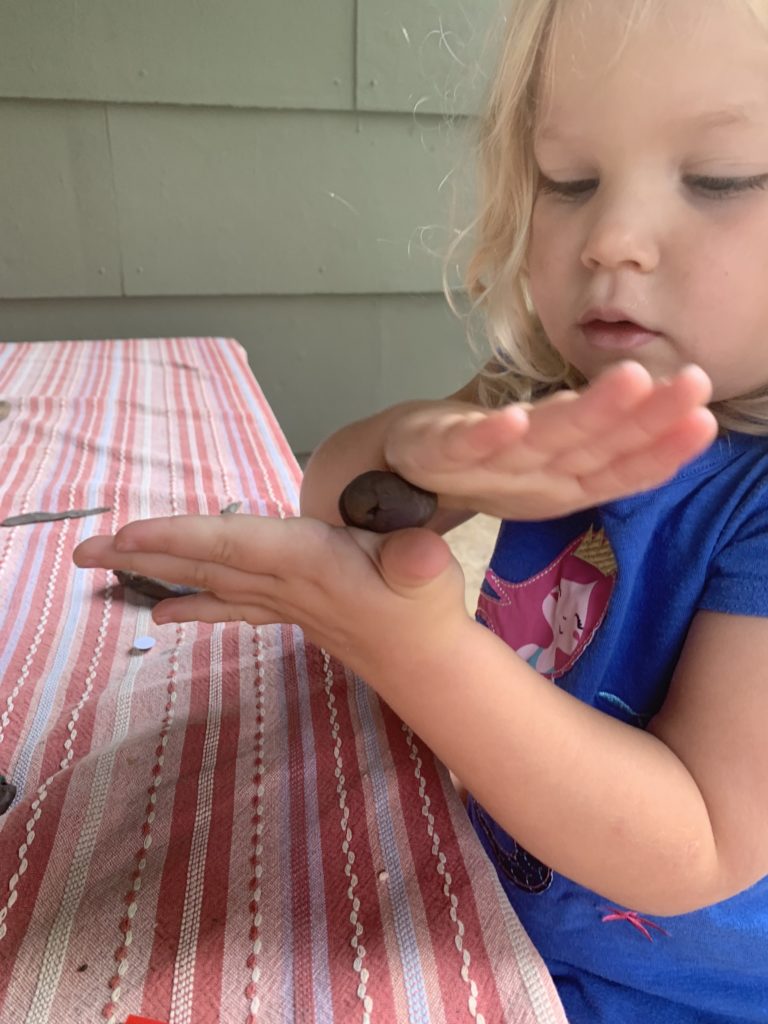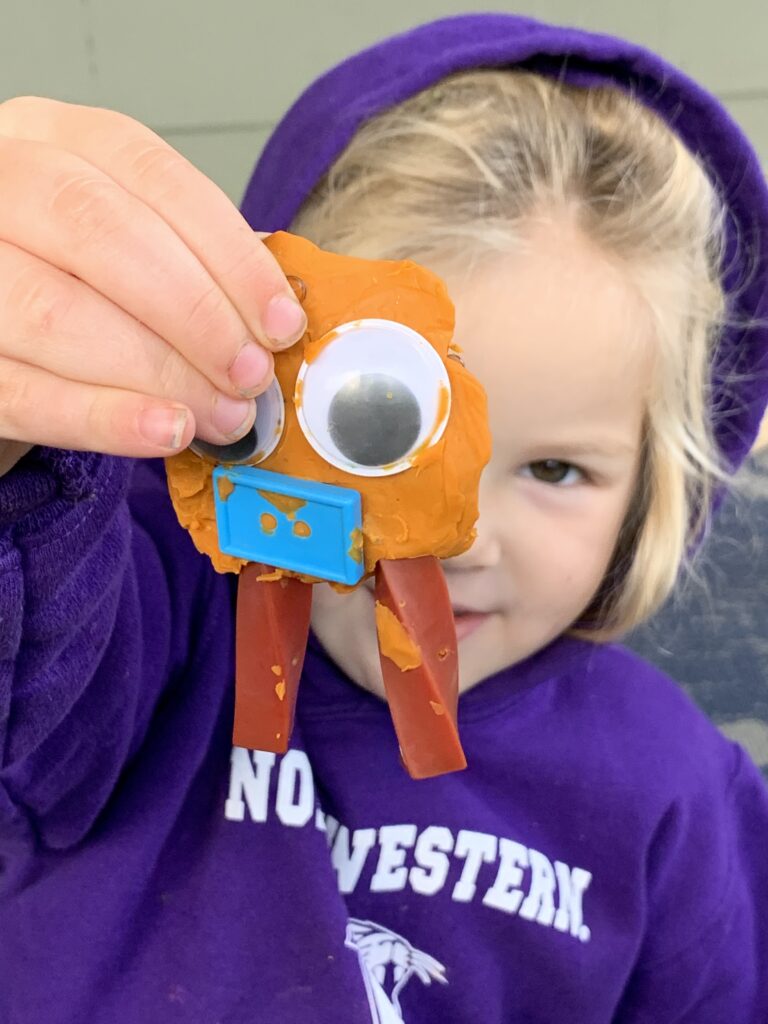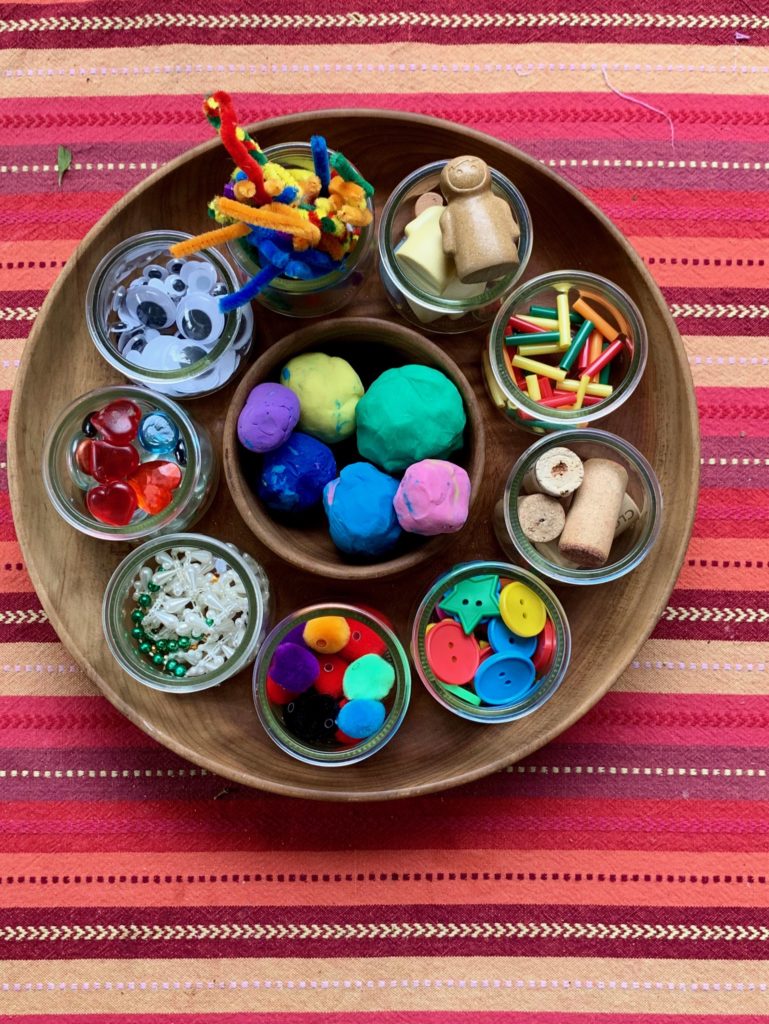Finding STEM in a Ball of Clay

Whether they are using homemade play dough, modeling clay or Play-Doh from a can, children can spend hours learning, playing and collaborating with that little ball of STEM magic.STEM play integrates science, technology, engineering and math learning while encouraging children to investigate, innovate and create.What do I love most about STEM play? Children are in charge of their own learning! 
We all draw our lines in the sand—those invisible lines that say: “This item is more than I care to deal with.”
For many early childhood educators, that item is play dough. If you are not a fan, please give modeling clay a try. It’s not as messy, it never dries out and it works little fingers and hands a wee bit more than play dough.I’ve discovered two types of clay that I really love. If money were no object, we would spend our days playing with Jovi Plastilina, When I’m on a budget, I purchase a classroom pack of Crayola modeling clay.
The children immediately become calm and focused when the modeling clay comes out. When I incorporate loose parts into our clay play, their creativity soars and their 3D constructions rise to a whole new level.To keep things simple, I will use the word clay throughout this blog post. But use what you have and use what you like. You will reap the many benefits of this STEM activity regardless of your medium!
We use clay indoors and outdoors, but we have one hard and fast rule: All clay must stay at the table. This isn’t always easy for our two-year-olds—who don’t stay in one place for long—but they love clay so much that they will always return to the table after a spin around the room or the playground to burn off some energy.
Clay also enables children to build in three dimensions, unlike coloring and painting. As they begin to grasp concepts such as form, shape and perspective, children are laying the foundation for geometry.
To build a strong foundation for STEM success, add clay to your list of building materials. Clay modeling helps foster the development of problem-solving and critical-thinking skills. When children create three-dimensional models, they are also developing rudimentary engineering design skills, which will set them up for success in school and in life.
This is how the sharing of ideas and techniques begins. Curiosity drives collaboration, which looks different in early learners than it does in older children.
As they develop an awareness of the world around them, early learners enter a period of intense investigation and discovery. During this period, sharing ideas and suggesting strategies comes naturally. Just knowing how to do something seems to be enough to satisfy the egos of most three-year-olds, and they are happy to share the secrets of their success.By the way, those googly eyes on Mariah’s robot? They sparked a weeks-long robot-building craze at our center. Try adding some googly eyes to your clay play stash. You’ll be amazed at the surge of interest and creativity that follows!

Trays give us a sense of order and add to the beauty and serenity of clay time. Chip-and-dip trays also work well. I like trays that are divided into sections because the separate compartments invite young children to touch and choose new materials to add to their clay creations.
When my students were going through their robot craze, I created a tray full of “robot parts” such as googly eyes, straws, pipe cleaners, bottle caps, corks and gems. As they worked with these robot-building materials, the children developed their spatial-language vocabulary with words such as on, in, under, beside, above and below. They also made predictions about how tall a robot could be before its head became too heavy for its body. This is STEM!By creating a STEM-rich environment with clay and loose parts, you will create limitless opportunities for children to construct, invent and think divergently as they develop their problem-solving skills and learn about measurement, spatial awareness, similarities and sorting and classifying.
It’s a STEM extravaganza—all in one little ball of clay!
Love the way children can be creative and use their fine motors skills.
Love this! We could even let the kids experiment with different types of “clay” or dough such as wet sand, flour dough, mud, etc and see how different it is for objects to stick to other types of clay
stem with a ball of clay allows each child to be unique in their own way by using their imagination through play, cognitive, social & emotion, using their fine motor skills while building and learning